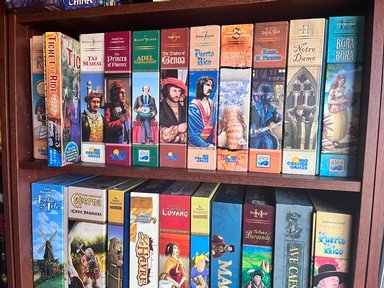Quiz Answer Key and Fun Facts
1. Derived from a game called "Halma", which is Greek for "jump", which traversal game is played on a board marked by 121 holes or indentations?
2. Would going first or last in a game of Crokinole provide a player with the better advantage?
3. Is there a perfect winning strategy to the board game "Connect Four"?
4. As you pass through a deck of 81 cards your mission is to collect more groups of cards than your opponents. The objects on the cards need to be all alike or they're totally different in every attribute. What game are you playing?
5. Inspired by a game that first appeared in a set of short stories that he wrote, which cool abstract strategy game created by Andrew Looney requires no turns, no dice and no cards?
6. No you're not Captain Cook but you can be a seafaring conqueror in which of the following, mostly luckless, economic engine games?
7. Just like chess the rank and capabilities of your pieces in the game of "Stratego" are known to your opponents at the very start?
8. "Mastermind" (not the UK quiz show) is one of the great logic board games on the market. As a player, what is your mission within the game?
9. Which of the following strategy games requires you to dispose of your coloured blocks so that their corners touch each other is so intense that it could help you in making patient investment strategies?
10. One of the best strategies in the game of "Othello" (sometimes called "Reversi") is to gain control of which sector of the board?
Source: Author
pollucci19
This quiz was reviewed by FunTrivia editor
WesleyCrusher before going online.
Any errors found in FunTrivia content are routinely corrected through our feedback system.
